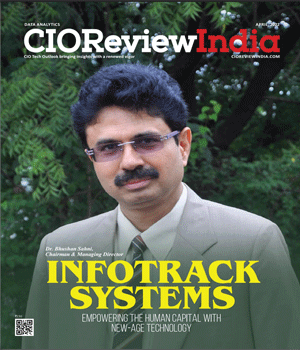
Initial Involvement of Stakeholders in Project Lifecycle
Vipin Kumar, CIO, Escorts group | Wednesday, 14 May 2014, 06:18 IST
Escorts Group (NSE: ESCORTS), headquartered in Faridabad, Haryana, is an Indian multinational engineering conglomerate which operates in the sectors of agro-machinery, construction and material handling equipment, railway equipment and auto components, with a present market cap of Rs. 1,701.37 Crores.
Information Technology is today making its need and presence felt in almost every domain of the industry. New technologies are coming up to make the business processes more efficient and give out-of-the-box solutions to meet the demands of the industry. They are taking Machine-to-Machine (M2M) communications, mobile native applications, security systems and others to the next level. Once these technologies are matured to certain level, they will help IT in providing business with meaningful value added services. The need of an organization is to visualize a problem considering the users’ perception. The relevance of technology implementation and its ability to produce good results need to be contemplated by the senior management and key stake holders in business. Only a well-informed decision can be backed by the required budgetary approvals for any new project from the organization, making businesses realize and own the inherent value in the technology initiative.
To overcome these challenges, Heads of IT need to work with business stake holders very closely and involve them from the initial phase of the project definition and technology evaluation to make business understand and own the product value. Recent case studies from various surveys conduct a proof of concept and clearly corroborate the business benefits on the table, making businesses own such initiatives and work for success. The IT leadership also needs to take care of correcting the various wrong notions, fears and assumptions which can hinder the progress towards starting new IT deployment. The role of IT initiative in business is being clearly defined and the emphasis is being given to drive innovations in technology through team work rather than individual or departmental performance. This is creating a healthy working environment and mitigating any risk of failure due to non-participation or non-ownership by business.
Having the Right Investment Strategy
While carrying out an IT implementation, organizations face the budgetary concerns when the cost of technology does not match the funds allotted for leveraging the Return on Investment. To tackle this challenge of constantly climbing on the ladder of growth, organizations must have an investment strategy in mind. Managing the change associated with people, processes and perceptions of business community for any new IT initiative and overcoming the challenges which come in the way are the primary objective which must be taken care of during any IT implementation. It is best to involve key business stakeholders in the very early stage of project definition. This creates a cohesive team structure and allows business to better understand the project intricacies. A well-integrated business and IT collaborative approach greatly helps in getting project approvals, budgetary allocations and creating the necessary confidence in business to own and realize the value arising from the technology deployment.
Technology is proving itself as a boon for the betterment of the business processes and deriving maximum value out of the investment but even today human resource remains the highest valued asset for every organization. Empowering the team work with complete responsibility and transparency without the fear of failure always remains the mainframe to any organization. Employing creative and innovative methodologies should be suitably recognized and rewarded. To keep the organization abreast of latest technologies, the organizations must constantly expose the business and IT teams in emerging technologies through seminars, training and event organizations. A regularly organized tech-day and product demonstrations through leading technology providers must be announced in an organization which helps the business organization in maturing its understanding of new emerging technologies and how best they can be used for realizing business benefits.
Look Beyond Skills of a Candidate
People working at different levels in IT need to possess different skills, as technical people must have strong base in programming skills while the managers must have a deep sense of business understanding and project management skills. At higher levels, business understanding expectation and relationship management along with people management are must for the organization to grow. While hiring IT professionals, the board must be very particular about the matching of candidate’s skills to the job requirement and must also deeply analyze the attitude and work ethics which an individual believes-in; this helps to understand the candidates’ potential for the organization.
With the market witnessing the sprouting of new technologies which are promising a persistent growth and overhauling the business processes for the better, the heads of IT need to work towards enhancing the involvement of the stakeholders throughout the project life cycle to boldly outline the objectives and generate high value.
CIO Viewpoint
Accept Data as an Entity on Balance sheet
By Akshey Gupta, Chief Data Officer, Bandhan Bank
Technology Forecast And Concern In 2020
By Anil Kumar Ranjan, Head IT, Macawber Beekay Private Limited
Data Analytics For Enhanced Productivity And...
By Krishnakumar Madhavan, Head IT, KLA
CXO Insights
Regulatory Implications and Data Protection:...
By Richa Singh
Data-Driven Predictive Technologies
By Pankaj Parimal, Head of Launch & Change Management, Hella Automotive Mexico, S.A. de C.V., Mexico, North America.
5 Mantras That Can Drive Organizations Towards...








.jpg)
.jpg)





